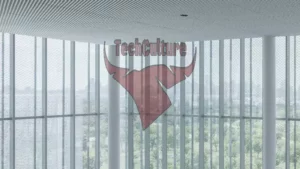Climate Change Forces Alaskan Village to Relocate
The remote Alaskan village of Newtok is facing an unprecedented challenge as climate change threatens its very existence. Ashley Tom, who grew up in this small Yup’ik community, has witnessed firsthand the devastating effects of erosion and melting permafrost on her childhood home. Now, the village’s 350 residents are preparing for a historic relocation to Mertarvik, a new site nine miles away.
For years, Newtok’s village leaders have been working tirelessly to find a suitable location for their community’s future. After negotiating a land swap with the federal government, they secured a site on Nelson Island. However, the relocation process has been slow and fraught with challenges, leaving residents to cope with increasingly difficult living conditions in a village split between two locations.
The urgency of Newtok’s situation is underscored by Alaska’s rapid warming, which is occurring at twice the global average rate. Recent record-high temperatures in the North Slope region have accelerated permafrost degradation, affecting infrastructure across the Arctic. Similar issues are being faced by indigenous communities in Russia and Scandinavia.
The Yup’ik people have a term for this catastrophic erosion: “usteq.” Climate scientist Rick Thoman explains that usteq describes the sudden and devastating impact of erosion and permafrost thawing on coastal communities.
Newtok is not alone in its struggle. A recent report identified 114 Alaska Native communities at risk, with the Government Accountability Office pinpointing six as imminently threatened. These communities face three options: protection, managed retreat, or complete relocation.
The relocation process is complex and expensive. Finding new locations, negotiating land swaps, and securing funding have proven to be significant hurdles. The estimated cost of relocating Newtok alone is $130 million, with limited federal funding available.
Recent legislation, including the Bipartisan Infrastructure Law and Inflation Reduction Act, may provide some relief. A health consortium report has also highlighted the financial need for mitigating infrastructure damage in affected communities.
As Newtok residents gradually move to Mertarvik, they face the challenge of reunifying their community. The closure of Newtok’s school and the opening of a temporary facility in Mertarvik mark significant milestones in this transition. Plans for new infrastructure, including a permanent school, grocery stores, and a church, are underway.
Despite the upheaval, there is hope for improved living conditions in Mertarvik. The new site offers better health prospects and opportunities for cultural continuity. Indigenous drum and dance groups continue to practice, and subsistence hunting remains an important part of daily life.
As Ashley Tom looks to the future, she remains optimistic about her community’s prospects in Mertarvik. While the relocation presents numerous challenges, it also offers the chance for a new beginning – one that preserves the rich cultural heritage of the Yup’ik people while adapting to the realities of a changing climate.




